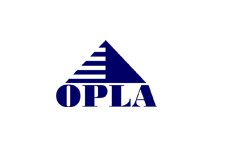The Quick & Dirty: What’s the Difference?
-
Provisional Patent Application:
- “Place holder” that secures your priority date.
- Never gets examined by the USPTO.
- Cheaper, less formal, never becomes a patent itself.
- Expires after 12 months (no extensions!).
- Always kept confidential—never published. Your trade secrets are safe. -
Utility Patent Application:
- The “real deal” that gets examined.
- Can become an issued patent and give you rights.
- Must be detailed, formal, and meet all requirements.
- Filing date matters—don’t miss it!
- Will be published by the USPTO 18 months after earliest filing, unless you opt out and only file in the U.S.
Why Would You Choose a Provisional?
Speed and Budget. Provisionals are quick to file and cost less up front. Perfect if you’re not 100% ready, but want to lock in your invention’s date while you work out details, raise funds, or test the market.
WARNING: A weak provisional can kill your patent rights. If it doesn’t describe your invention well enough, it’s almost as bad as not filing at all.
Can You Put Multiple Embodiments in a Provisional?
Absolutely—and you should! A provisional is your chance to disclose every variation, alternate design, or approach (“embodiment”) you can think of for your invention. Even if you’re still guessing at ways your idea might be realized, describe each one in as much detail as possible.
Later, when you file your utility patent application, you can “pull” the embodiment(s) that work best or are most commercially viable and claim them—so long as they were fully described in your original provisional. This strategy can help you stay a step ahead of competitors or changing technology.
When Should You Go Straight to Utility?
- You’re ready to go to market or disclose your invention publicly.
- You have funding and want to start the clock on examination ASAP.
- You want actual patent rights (not just “patent pending” status).
Common Myths (& Mistakes!)
- Myth: A provisional “turns into” a patent automatically.
Reality: You MUST file a utility within 12 months, or you lose your place in line. - Myth: You can keep filing provisionals forever.
Reality: The clock is ticking the first time you file—don’t play games with your IP.
Quick Summary Table
| Assertion | Correct? | Details |
|---|---|---|
| Many embodiments can be described in a single provisional application, and later “pulled” into a utility patent. | Yes | As long as each embodiment is fully described, you can claim any or all in your utility filing. |
| Provisional patent applications are always confidential and never published by the USPTO. | Yes | Unlike utility applications, provisionals are not made public—even after 18 months. |
| The real value of an early filing date is to secure your “place in line” for patent rights, not to immediately enforce or sue for infringement. | Yes | Filing early prevents later “prior art” from blocking you, but you can’t enforce until the patent issues. |
My Real-World Advice
If you’re still developing, unsure about funding, or want “patent pending” status fast, a well-drafted provisional is a smart move—especially if you describe every embodiment or variation you can think of. If you’re ready to go big, skip straight to utility and don’t look back.
Reach out for a consult or explore more in Protect & Profit.


